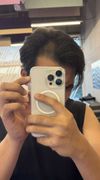community 90days progress so far on 5% topical minoxidil 2x/day, 1.5mm dermaroll 1x/week, 1mg oral finasteride 1x/day
The conclusion of this conversation is that after 90 days of using 5% topical minoxidil, dermarolling once a week, and taking 1mg of oral finasteride daily, the user "M3ga_Shniz" has experienced a complete stop in hair loss thanks to finasteride. They are hopeful that their temples will continue to grow more as they continue with the treatment.

